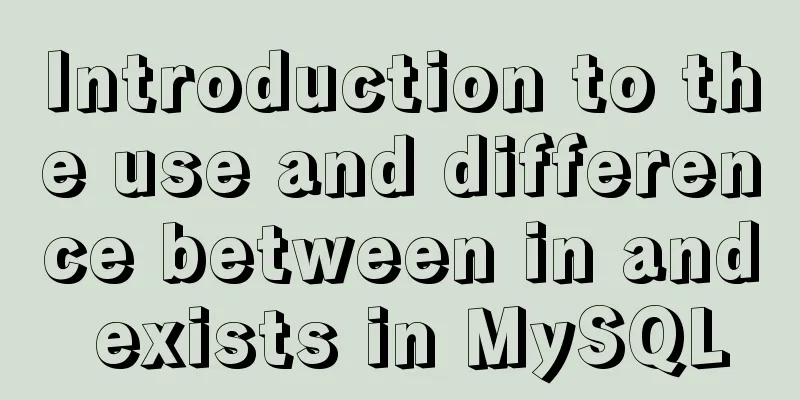How to limit the value range of object keys in TypeScript

|
When we use TypeScript, we want to use the type system it provides to constrain all aspects of the code, and the key values of objects are no exception. For example, we have an object that stores the names of people in each grade, and the type might look like this: type Students = Record<string, string[]>; Of course, the data looks like this:
const students: Students = {
Freshman: ["David", "John"],
sophomore: [],
Junior: ["Lily"],
Senior: ["Tom"],
};Limit object keys to enumerationsThe problem with the above data type is that there are only a limited number of possible values for grade, but attributes can be added to the object arbitrarily, which makes the data seem impure. So we add a new enumeration to list the possible values:
export enum Grade {
Freshman,
sophomore,
Junior,
Senior,
}Now, just restrict the object's keys to the above enumeration. - type Students = Record<string, string[]>; + type Students = Record<Grade, string[]>; Our data can be written like this:
const students: Students = {
[Grade.Freshman]: ["David", "John"],
[Grade.sophomore]: [],
[Grade.Junior]: ["Lily"],
[Grade.Senior]: ["Tom"],
// ❌ Object literal may only specify known properties, and 'blah' does not exist in type 'Students'.ts(2322)
blah: ["some one"],
};In this way, the range of key names on the object is limited. You can see that an error will be reported if a key outside the enumeration is added. More semantic enumeration valuesHowever, the above approach is still inappropriate, because the enumeration value defaults to a number starting from 0, so it is not semantic enough as a key value, which is reflected when accessing the properties of the object:
Let's fix our enum to use more semantic text as its value:
export enum Grade {
Freshman = "Freshman",
sophomore = "sophomore",
Junior = "Junior",
Senior = "Senior",
}Now when you use the enumeration again, the numbers you get are no longer meaningless.
If you want, the enumeration value can also be Chinese,
export enum Grade {
Freshman = "Freshman",
sophomore = "Sophomore",
Junior = "Junior girl",
Senior = "Senior driver",
}There is no problem when using:
Key value optional There is another problem with the above type definition, that is, it requires that the object contains all the values in the enumeration when used. For example, there is no one in the grade of
// ❌ Property 'sophomore' is missing in type '{ Freshman: string[]; Junior: string[]; Senior: string[]; }' but required in type 'Students'.ts(2741)
const students: Students = {
[Grade.Freshman]: ["David", "John"],
// [Grade.sophomore]: [],
[Grade.Junior]: ["Lily"],
[Grade.Senior]: ["Tom"],
};Therefore, the optimization type is optional: type Students = Partial<Record<Grade, string[]>>; If the optional values are not defined by an enumeration but come from an array, const grades = ["Freshman", "sophomore", "Junior", "Senior"]; This means we need to extract the values in the array into a union type. First, use const assertions to convert the array to a tuple type. const grades = <const>["Freshman", "sophomore", "Junior", "Senior"]; Then use // Actually type Keys = "Freshman" | "sophomore" | "Junior" | "Senior" type Keys = typeof grades[number]; Finally, the data type and data can be written as:
type Students = Partial<Record<Keys, string[]>>;
const students: Students = {
Freshman: ["David", "John"],
Junior: ["Lily"],
Senior: ["Tom"],
};Note that in this form, the object key has no syntactic association with the elements in the original array, that is, the editor's "jump definition" is unavailable.
Try to keep the code connected to show the role of TypeScript, so operations like this that only have type constraints but cannot establish connections are not recommended. Related resources const assertions keyof and Lookup Types The text was updated successfully, but these errors were encountered: The above is the details of limiting the value range of object key names in TypeScript. For more information about limiting the value range of object key names in TypeScript, please pay attention to other related articles on 123WORDPRESS.COM! You may also be interested in:
|
<<: MySQL 5.6.15 installation and configuration method graphic tutorial under Windows 8
>>: How to install PostgreSQL and PostGIS using yum on CentOS7
Recommend
Loading animation implemented with CSS3
Achieve results Implementation Code <h1>123...
js to realize web message board function
This article example shares the specific code of ...
Samba server configuration under Centos7 (actual combat)
Samba Overview Samba is a free software that impl...
How to handle the loss of parameters when refreshing the page when passing parameters to vue router
Table of contents Overview Method 1: Pass paramet...
Detailed explanation of JavaScript's Set data structure
Table of contents 1. What is Set 2. Set Construct...
Detailed explanation of the implementation process of building a kernel tree in Ubuntu 12.04
First check the kernel version you are using lin@...
How to write DROP TABLE in different databases
How to write DROP TABLE in different databases 1....
Detailed explanation of the correct use of the if function in MySQL
For what I am going to write today, the program r...
How to add vim implementation code examples in power shell
1. Go to Vim's official website to download t...
Use DIV mask to solve the problem that directly checking the checkbox with the mouse is invalid
During the front-end development process, a situat...
Some questions about hyperlinks
<br />I am very happy to participate in this...
How to solve the problem of ERROR 2003 (HY000) when starting mysql
1. Problem Description When starting MYSQL, a pro...
A brief analysis of SpringBoot packaging and uploading to docker and implementing multi-instance deployment (IDEA version)
Recently a friend asked me if I have ever played ...
Detailed Analysis of the Selection of MySQL Common Index and Unique Index
Suppose a user management system where each perso...
A set of code based on Vue-cli supports multiple projects
Table of contents Application Scenario Ideas Proj...













